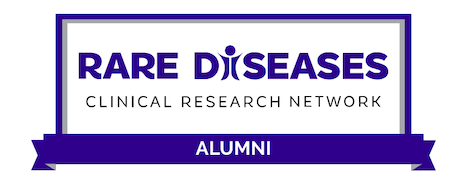What causes Porphyria Cutanea Tarda?
Porphyria cutanea tarda (PCT) is caused by low levels of the enzyme UROD. The low levels of UROD enzyme causes porphyrins to accumulate because there isn’t enough enzyme activity to process them. Exposure to sunlight activates the accumulated porphyrins in the skin and results in blistering.
There are two types of PCT, one is inherited and called familial PCT (caused by changes in the UROD gene), and the other is not inherited and called sporadic PCT (with no known gene changes). The sporadic type is more common.
There are several risk factors for developing PCT symptoms, including:
- Excessive alcohol use
- Smoking
- Use of oral estrogens (birth control pills, hormone replacement therapy, etc.)
- Hepatitis C infection
- HIV (human immunodeficiency virus) infection
- A disease called hemochromatosis which causes iron overload
What are the symptoms of Porphyria Cutanea Tarda?
Skin symptoms appear on parts of the skin exposed to sun, most frequently the face, hands and feet. Symptoms do not appear until hours or days after exposure.
- Skin blisters, sores or scarring
- Fragile skin that may blister or peel after minor trauma (like a bump or scrape)
- Discolored (excessively light or dark) scars
- Excessive hair growth, particularly on the face
How is Porphyria Cutanea Tarda Diagnosed?
PCT is diagnosed using biochemical testing, starting with testing plasma and urine for elevated porphyrins. Additional testing is required to rule out other reasons that porphyrins may be high (ex. lead exposure) and other types of porphyria
What are treatments for Porphyria Cutanea Tarda?
PCT is treated either with regularly scheduled phlebotomies (removal of blood), or with a low dose of the drug hydroxychloroquine, a medication normally given for malaria. These treatments are generally equally effective, however patients with marked iron overload should be treated by phlebotomy rather than hydroxychloroquine, to correct both the PCT and the underlying iron overload.
These treatments generally work to stop symptoms within 6-9 months. Relapses that occur after the initial treatment can be treated successfully using the same approach as for initial treatment. Patients should be tested to see if they have any of the risk factor infections, which should be treated if present. PCT caused by hepatitis C can be treated with one of the antiviral regimens to remove that specific risk factor.
How is Porphyria Cutanea Tarda managed?
The risk factors for developing PCT symptoms should be avoided while someone is having symptoms. Generally, after the successful treatment of PCT, blistering does not happen again, but in some people a recurrence of symptoms can happen. This is why it is important to follow-up with a porphyria specialist at least once a year.
Light Avoidance
Protect your skin from the sun by using sun protective clothing and avoiding prolonged sun exposure. Most conventional sunscreens are not effective because they do not block light in the blue-violet range, which is the type of light that triggers reactions in porphyria.
Avoid risk factors
Avoid excessive alcohol consumption, smoking and oral estrogens.
How do you monitor and what are long-term complications of Porphyria Cutanea Tarda?
Abnormal liver function tests can be seen in people with PCT, but they are usually mild. PCT is often associated with hepatitis C infection, which also causes liver complications. However, liver tests are generally abnormal even without hepatitis C infection. Some people with PCT can develop cirrhosis (chronic liver damage and scarring) and even liver cancer.
How is Porphyria Cutanea Tarda inherited?
Only the familial form of PCT can be inherited, and even in this form people with PCT generally do not have any family members with symptoms. Familial PCT is an autosomal dominant condition. Autosomal means that the defect is not on the chromosomes that determine sex, and dominant means that one only needs to inherit one changed gene to have the disease.
Genes are inherited randomly, so a parent has an equal chance of passing on either copy of each gene. Since most familial PCT patients have one changed copy and one normal copy, this means that each of their children will have a 50% chance of inheriting the changed copy and 50% chance of inheriting the normal copy.

